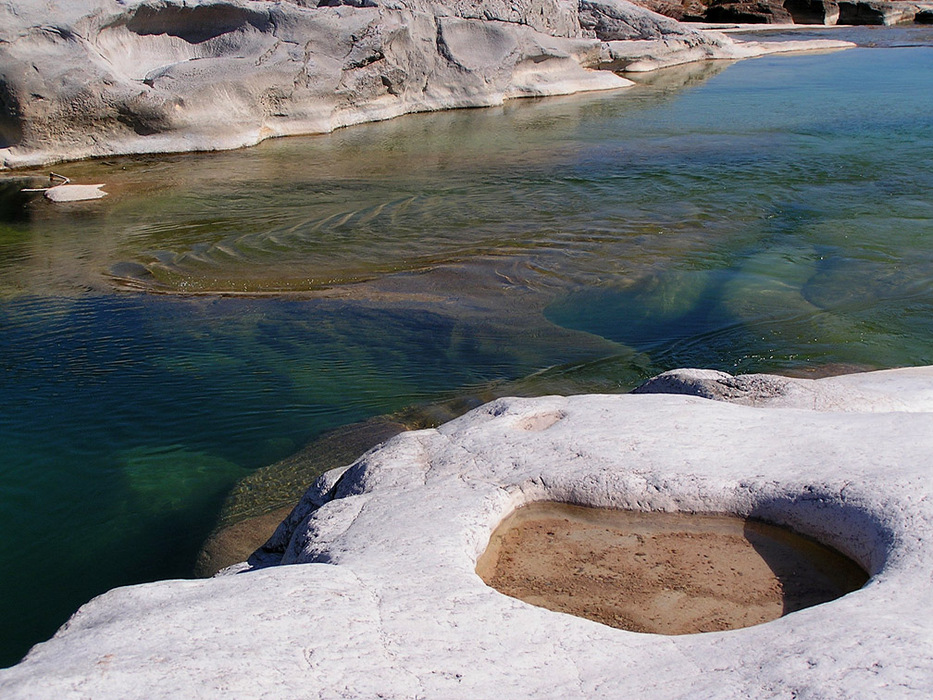
Photo: Ann-Marie Madden Irwin
Sarah Zappitello, a graduate student in the Department of Biology at Texas State University, has published results from a year-long study determining the origin and quality of water carried by the Pedernales River.
The research is part of a larger study facilitated by The Meadows Center for Water and the Environment on the Pedernales River watershed.
Zappitello’s research centered on finding the origin of surface water in the Pedernales River and involved intensive water testing of 100 different sites within the watershed. As an aquatic resources graduate with a passion for conservation, the study also served as her thesis for graduate school.
“Our goal was to examine the surface water and water chemistry in the river and its tributaries to determine which aquifers the water was coming from,” Zappitello said. “The natural chemistry of the water was used as a ‘natural tracer’ to find its source.”
The study found that available surface water during dry water seasons came from groundwater as hypothesized, and that its quality was well within the Environmental Protection Agency’s drinking water limit.
“We were curious about the water quality because that’s important to the people who live out there and for those who are interested in water conservation,” Zappitello said. “Relating the surface water to the aquifers is very important not only for conservation, but also to help direct future policy and management.”
The regional groundwater signature was then used to find the location of springs, even when private land ownership prevented the team from accessing a spring’s physical location. Zappitello utilized spatial analysis to relate the geology and rock units to the spring locations. This allowed the team to find which aquifers were being hosted by their respective geological units and allowed the researchers to cross-reference each aquifer as the source of each surface water sample.
“Another goal was to compare the conditions of the water from last year’s test in 2015 to the one conducted by the Texas Water Commission in 1962,” Zappitello said. “Some of the water quality seems to be getting better, which can be due to improved wastewater treatment practices. There was an increase in fluoride, which can be due to human inputs.”
Through support from the Cynthia and George Mitchell Foundation, this summer The Meadows Center will conduct the first gain-loss analysis on the Pedernales in more than 50 years to complete this study and answer the question, “How Much Water is in the Pedernales?”
“Landowners are critical to making this gain-loss study work,” Project Manager Jenna Walker said. “We hope to gain access to as many private wells as possible within the eastern portion of the watershed (east of Johnson City) to measure groundwater levels this summer.”
As land developers, conservationists and policy makers become aware of the study, Zappitello hopes to see positive results in the future of Central Texas water legislation.
“Understanding these natural systems is the only way to really make effective policy decisions,” Zappitello said. “This area doesn’t have much urban development, so this creates the opportunity for proactive conservation.”
Partner organizations include the Hill Country Alliance, Nature Conservancy, Alamo Area Master Naturalists, Lower Colorado River Authority, Texas Parks and Wildlife, Hill Country Underground Water Conservation District, and the Department of Biology at Texas State.
Land owners on the eastern portion of the Pedernales watershed and who have wells on their property they’re willing to have measured are invited to email the Pedernales Project Manager, Jenna Walker, at jj1433@txstate.edu or call (512) 245-9148.
To read Zappitello’s full report and to view the findings from the interim Pedernales report conducted by The Meadows Center, visit www.MeadowsWater.org/Research/Freshwater/Pedernales.html.
About The Meadows Center
The Meadows Center for Water and the Environment was named following a generous gift from The Meadows Foundation in August 2012. The Meadows Center is dedicated to environmental research, stewardship, education and service, and is led by Executive Director Andrew Sansom, Ph.D.

